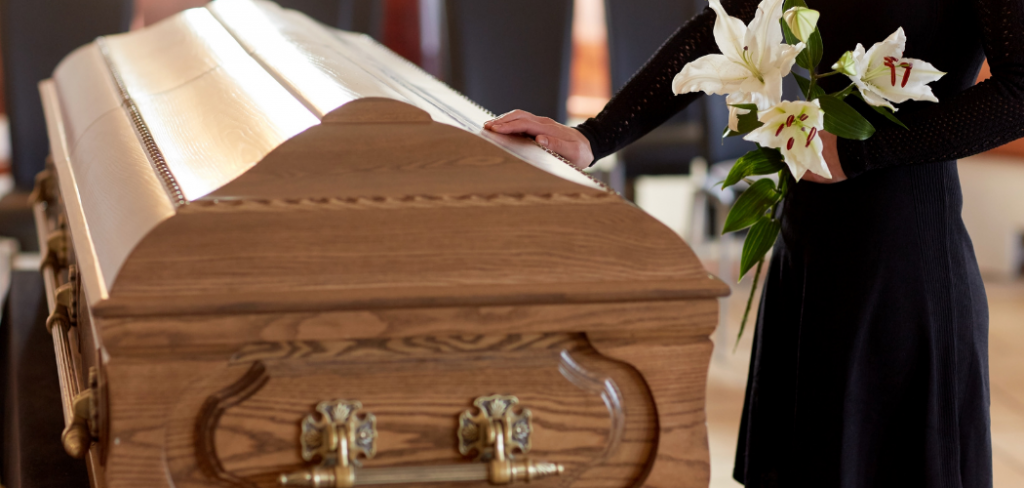Death has always been a thing most people don’t talk about. It’s gut-wrenching to lose someone you hold dear to your heart. Even thinking about the idea leaves our stomachs in knots. Even imagining the funeral alone would leave some panicky. But what do we usually notice about funerals? Sure, there are flowers, lights, the coffin. But what else? Ever noticed why people wear black to funerals? It is a fact that there is a certain etiquette when it comes to visiting funerals, depending on the culture.
People Wear Black to Funerals: When & How It Started
Dressing up for any occasion is a thing most cultures practice. People dress up to funerals. This is not because of vanity but rather to show respect to the bereaved family. And most people would be caught wearing the same color, which is black. Wearing black means you are with the family, mourning the loss of a person while showing respect for the deceased.
Historically, the first recorded instance of people mourning the dead while wearing black was way back to the Roman Empire. When someone, a loved one, for example, died, the Romans decided to wear dark colored togas known as toga pulla.
By the time the Middle Ages came in, wearing black when mourning became a status symbol for wealth in Europe. Only the rich could afford to buy black mourning clothing because it was something hard to procure. It even became a sort of a competition between the widows. Each trying to outdo each other in making themselves extravagant. Plus, they would also wear hoods, black veils, and long trains. And even valuable jewelry worn during the mourning of a lost husband.
And in the era of Queen Victoria in the 19th century, mourning in black became a trend to the public. This applies to both commoners and aristocrats. The death of Prince Albert devastated the queen and prompted her to wear black until her own death. Wearing black has greatly influenced the upper class as to be one with the queen.
How long do you wear black for mourning?
Mourning takes time to process. And there are stages of it before reaching the point of acceptance. These are Denial, Anger, Bargaining, Depression, and finally Acceptance. People wear black to funerals shows mourning to someone dearest to them. This one varies from culture to culture. Some cultures take mourning more seriously as compared to others. And some got creative on how to mourn their loss. But, how long do you wear black for mourning?
Black is only worn during funerals and burials. However, in Assyrian tradition, black is worn by the mourning family for at least 40 days. During this time, the family of the deceased would not celebrate any major events for at least a year as a sign of respect to the lost member.
Another notable length of wearing black are those cultures found in Slovakia, the Czech Republic, Portugal, Greece, Spain, and Mexico. In these cultures, the widows are known to wear black until it is their turn on the deathbed. Even since the 1870s, those who migrated to western nations, like the United States, were to wear only black for at least 2 years.
People Wear Black To Funerals From Different Parts of the World
Asking what to wear to funerals is as important as asking why do people wear black to funerals. In Asia, specifically Japan, mourning garbs are as intricate as it can be. The mofuku refers to the Japanese mourning dress of which Western-style or traditional Japanese clothing. It is in black worn during both the funeral and other Buddhist memorial services. Bright colors and shades of red are considered inappropriate to wear. Women who don Western-style dresses also accompany the outfit with a single-strand white pearl necklace. While men’s outfits consisted of a plain black silk kimono that was five-crested. Which is over white undergarments, while wearing white or gray striped hakama trousers white or black zori, white tabi, and a black-crested haori jacket with white closures.
In the United Kingdom, what to wear to a funeral is not much of an issue in the current years. However, during the late Georgian and Victorian eras, people who mourn followed a certain standard of clothing. The color of choice was always black. This was amplified when Queen Victoria’s husband died. This led the queen to only wearing black for the rest of her life. This influenced the general public and became a trend amongst the aristocrats mourning a loss of a loved one.
Conclusion
Death and mourning always come hand in hand. They are one of the key points of any culture. When there is death, there is also mourning. And traditions all over the world vary from culture to culture. Bringing about a rich scene of people who show their respects through how they dress for the occasion. Though as morbid as it can be. Some are strict, while some are more fluid than others. And though things are different in every corner of the world. One thing remains as the common thread that links all cultures. We all wear black to mourn the loss of a loved one.
From tropical Asia to the aristocrats of Europe and the Americas, mourning traditions are forever weaved into the fabric of the culture and its underlying traditions. And even if we ask, “why do people wear black to funerals?” The answer is, simply, why not?
